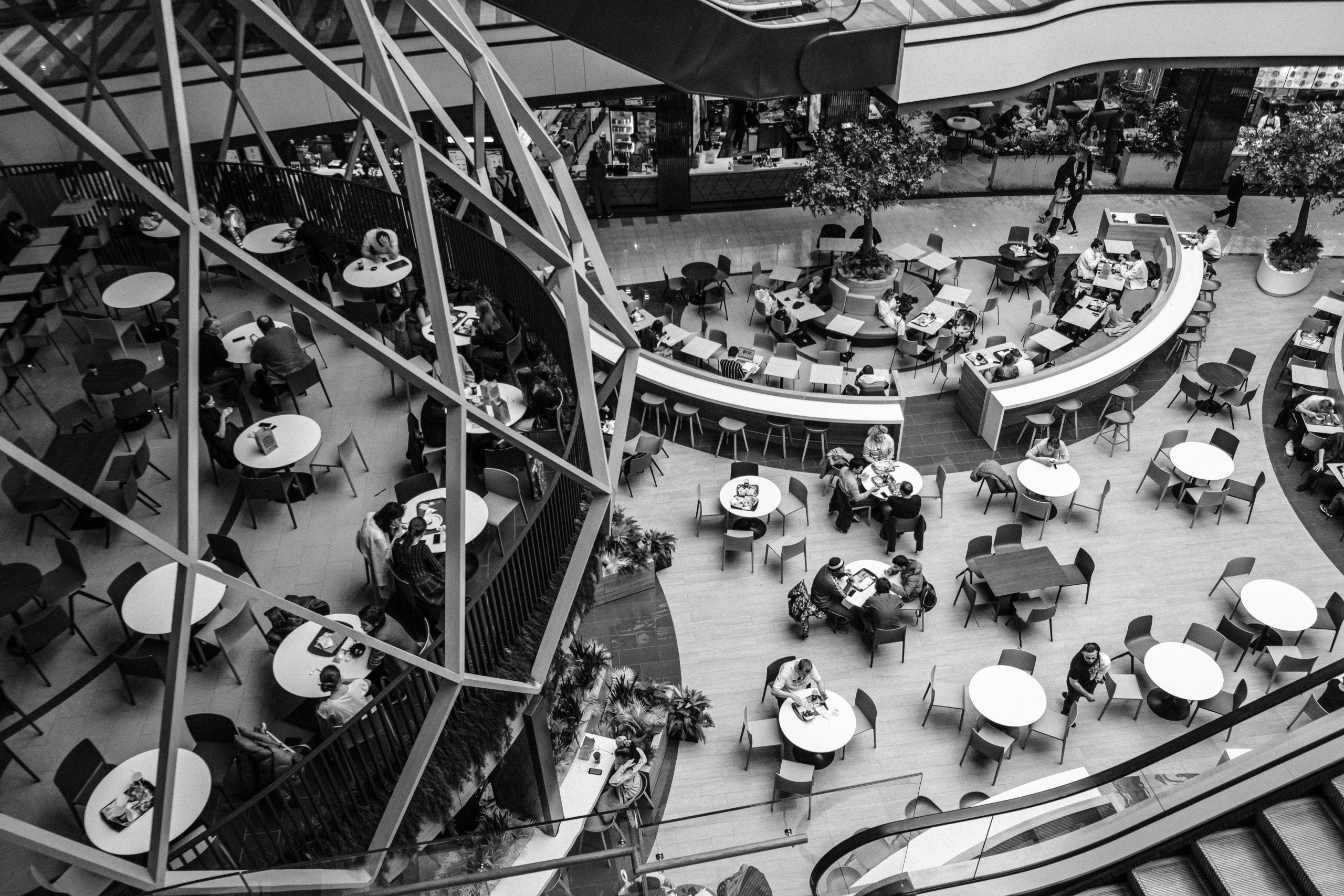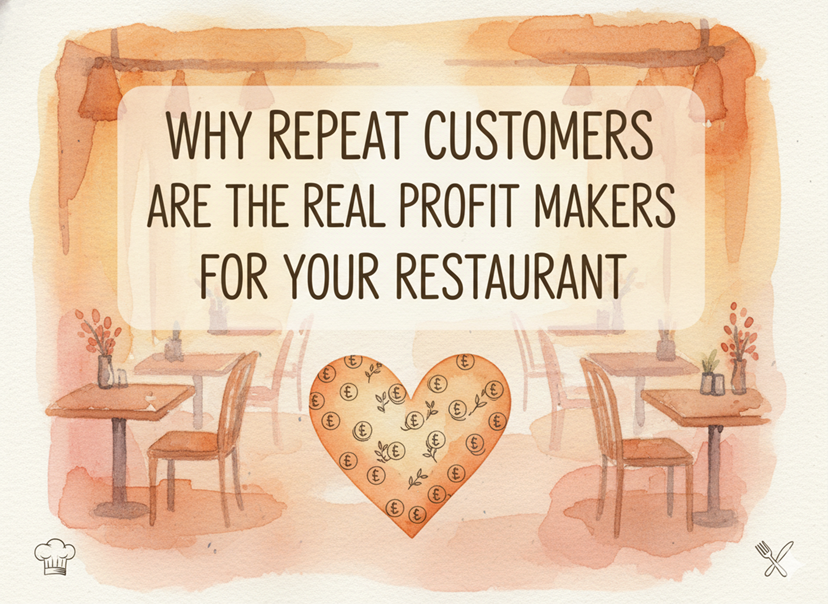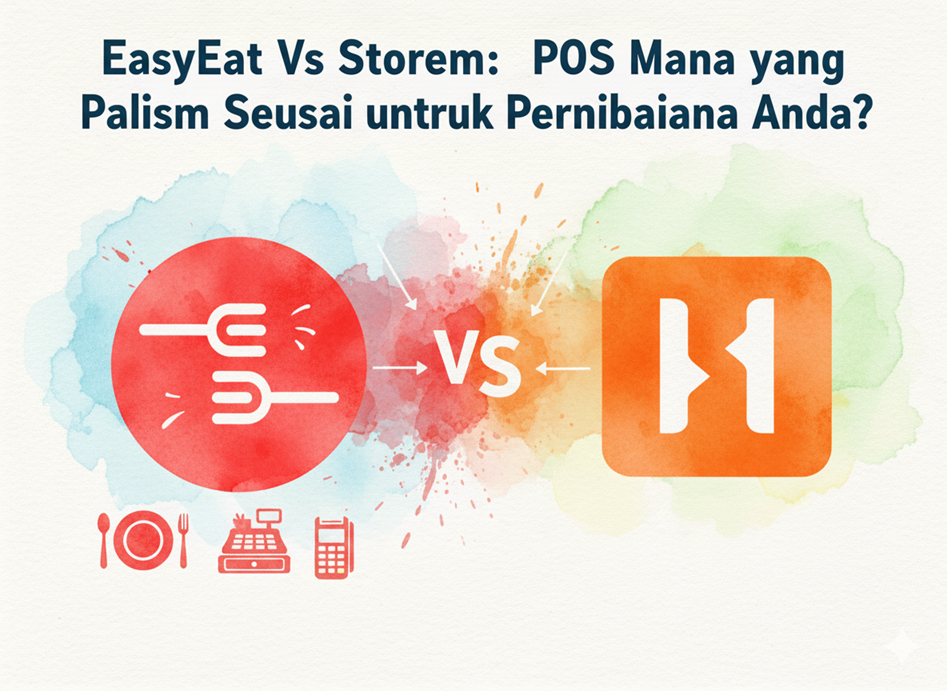Creating a successful food court is all about balancing a great customer experience with a smart, sales-boosting layout. Food courts are busy places where people want to grab a quick meal, relax with friends, or have a snack while shopping. When you, as a restaurant owner, set up a food court, your goal is to attract customers, keep them happy, and encourage them to return. But achieving this requires more than just great food; it requires an efficient, attractive food court layout.
In this guide, you’ll learn how to design a food court layout that not only improves customer flow but also helps you increase sales. We’ll also discuss tips for creating a visually appealing and comfortable space for everyone.
What is the Size of a Food Court Design?
Food courts vary in size, depending on the type and location of the mall or plaza. On average, a typical food court layout ranges from 5,000 to 20,000 square feet (Urban Land Institute). Knowing the specific size of your space is essential because it will impact seating, kitchen, and customer flow.
For a smaller food court, space is a premium, so you’ll want to prioritize essential seating and efficient kitchen areas. If your space is larger, you have more flexibility with seating arrangements, decorative elements, and customer traffic zones. Either way, optimizing the layout is key to making sure every square foot works towards your goals.
Arrange Seating for Comfort and Flexibility
The seating layout in your food court should accommodate both small and large groups comfortably. Ideally, 60% of a food court’s space should be dedicated to seating (Food Management Magazine). This allows room for various seating options, including high tables, booths, communal tables, and counters. Having flexible seating arrangements encourages groups to gather without taking up extra room, while solo diners can choose quick-seating options like counters or high tables.
When possible, add a few moveable tables and chairs. Flexibility is key in food courts, as groups may want to move tables to sit together. Also, ensure you have sufficient seating to handle peak times, like weekends and lunch hours. For instance, many successful food courts use a mix of long communal tables and smaller tables, which lets you maximize space.
Improve Customer Flow with a Clear Pathway
In a busy food court, customer flow plays a huge role in creating a positive experience. The layout should have clear pathways that guide customers to and from food stalls, seating areas, and exits without confusion. According to Food Industry Consultant Maria Smith, “a well-designed flow can boost customer traffic by up to 30%.” When pathways are smooth and clear, it’s easier for customers to navigate, making them more likely to stay longer and purchase more.
To create a natural flow, position food stalls in a way that pulls customers in but doesn’t block key areas. An organized layout should create a simple loop around the food court so people can see all options before deciding. Avoid creating dead ends or narrow passages, as they can cause crowding and make the food court feel cramped.
Position Food Stalls Strategically
Positioning food stalls is an art. You want to create a balance between high-demand vendors, like popular fast food or coffee stalls, and niche options that offer unique experiences. High-traffic vendors should be positioned near the entrance or in high-visibility areas, while specialty stalls can be placed in other parts of the food court to draw customers deeper into the space.
Another great tip is to place dessert or beverage stalls near the exit. After customers have eaten, they are more likely to stop for a quick treat or drink. This layout strategy can increase average ticket size, as customers add a snack or drink before leaving.
Optimize the Kitchen Space
Efficient kitchen space is essential for quick service, especially in a food court. According to Restaurant Business Online, “reducing order wait time by just 30 seconds can increase customer satisfaction by up to 10%.” Food court kitchens need to be compact, organized, and well-equipped to handle high volumes during peak hours. Think about storage solutions, food prep areas, and waste disposal as well, as these elements can speed up service and reduce wait times.
It’s also helpful to design the kitchen with the staff in mind. An ergonomic setup minimizes unnecessary movement, making it easier for employees to serve customers faster. Consider an open kitchen setup if possible; it allows customers to see their food being prepared, which can enhance their dining experience.
Create a Visual Impact with Lighting and Signage
Lighting and signage are often overlooked but are crucial in creating an inviting space. Bright, warm lighting can make a food court feel welcoming and comfortable. Avoid using overly bright or dim lighting, as it can make the space look uninviting. Instead, choose a balance that’s both functional and atmospheric.
Signage is another essential feature for grabbing customer attention. Each food stall should have clear, attractive signage that reflects its brand and offers customers a preview of the menu. Many successful food courts use digital signage because it’s easy to update and looks modern. Studies show that digital signage can increase sales by up to 33% (Digital Signage Today). With digital boards, you can highlight specials, change up visuals, and even use animations to capture attention.
Design an Open, Accessible Layout
Accessibility is vital in a food court, as it ensures a positive experience for all customers. An accessible food court should include wide aisles, tables at varying heights, and seating arrangements that accommodate wheelchairs and strollers. By creating a space that’s open and easy to navigate, you cater to all customers, encouraging them to return.
According to the Center for Universal Design, “accessible design increases foot traffic by up to 15%.” Simple additions, like ramped entrances and wide pathways, make a big difference in customer comfort and satisfaction.
Integrate Technology for a Modern Food Court Experience
In today’s digital world, integrating technology can help improve customer experience and boost sales. Using QR code menus, for instance, lets customers view menus, place orders, and pay directly from their phones. This eliminates long wait lines, which is especially useful in a food court setting where customers are looking for quick service.
Integrating a POS system across multiple vendors can make payment easier for customers, as they won’t need to handle cash at each stall. It also helps you keep track of sales, monitor inventory, and analyze customer preferences.
Enhance the Ambiance with Décor and Music
The ambiance of a food court is crucial in creating a pleasant dining experience. Decor elements, like plants, art, or even themed areas, can add personality to the food court. Consider creating separate areas for different seating types or adding cozy elements like lighting and greenery to make the space more inviting.
Music can also be a powerful tool in enhancing customer experience. Choose background music that’s upbeat but not too loud. Studies show that background music can increase customer satisfaction by 25% (National Restaurant Association). People tend to stay longer and enjoy their meals more with good music, which can lead to higher sales and repeat visits.
Prioritize Cleanliness and Maintenance
A clean, well-maintained food court is essential. Customers notice cleanliness, and many are willing to avoid messy areas even if they have great food. Make sure to have regular cleaning schedules, especially during peak hours. Train staff to maintain cleanliness by clearing tables, disposing of trash, and tidying restrooms.
According to Food Service Magazine, “cleanliness is the top factor in customer satisfaction for 67% of diners.” A well-maintained environment keeps customers happy and shows that you care about their experience.
Optimizing a food court layout involves thoughtful planning and attention to detail. From arranging seating and strategically positioning food stalls to improving customer flow and integrating technology, each element contributes to a better customer experience. By designing a visually appealing and efficient space, you’ll attract more customers, increase sales, and create an inviting and enjoyable food court.
Use these tips as a guide to creating an optimized food court layout. With the right approach, you’ll see positive results in sales and customer satisfaction.




